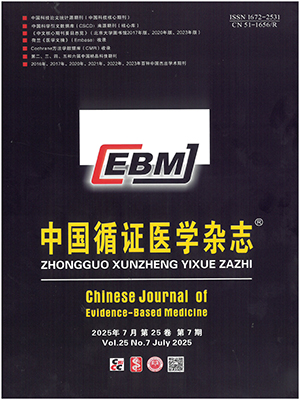| 1. |
中华人民共和国国家卫生和计划生育委员会. 安宁疗护实践指南(试行). 2017.
|
| 2. |
Van Lancker A, Velghe A, Van Hecke A, et al. Prevalence of symptoms in older cancer patients receiving palliative care: a systematic review and meta-analysis. J Pain Symptom Manage, 2014, 47(1): 90-104.
|
| 3. |
DeForge CE, George M, Baldwin MR, et al. Do interventions improve symptoms among ICU surrogates facing end-of-life decisions. A prognostically-enriched systematic review and meta-analysis. Crit Care Med, 2022, 50(11): e779-e790.
|
| 4. |
Radcliff S, Yue J, Rocco G, et al. American geriatrics society 2015 updated beers criteria for potentially inappropriate medication use in older adults. J Am Geriatr Soc, 2015, 63(11): 2227-2246.
|
| 5. |
中国老年保健医学研究会老龄健康服务与标准化分会. 老年人慎用药物指南. 中国老年保健医学, 2018, 16(3): 19-23.
|
| 6. |
World Health Organization. WHO handbook for guideline development. 2nd ed. Geneva: WHO, 2014: 1-167.
|
| 7. |
Schünemann HJ, Wiercioch W, Etxeandia I, 等. 指南2. 0: 为成功制定指南而系统研发的全面清单. 中国循证医学杂志, 2014, 14(9): 1135-1149.
|
| 8. |
陈耀龙, 杨克虎, 王小钦, 等. 中国制订/修订临床诊疗指南的指导原则(2022版). 中华医学杂志, 2022, 102(10): 697-703.
|
| 9. |
Guyatt GH, Oxman AD, Vist GE, et al. GRADE: an emerging consensus on rating quality of evidence and strength of recommendations. BMJ, 2008, 336(7650): 924-926.
|
| 10. |
拜争刚, 刘少堃, 黄崇斐, 等. 定性系统评价证据分级工具—CERQual简介. 中国循证医学杂志, 2015, 15(12): 1465-1470.
|
| 11. |
Brouwers MC, Kerkvliet K, Spithoff K, et al. The AGREE reporting checklist: a tool to improve reporting of clinical practice guidelines. BMJ, 2016, 352: i1152.
|
| 12. |
杨楠, 赵巍, 潘旸, 等. 针对临床实践指南科学性、透明性和适用性的评级工具研发. 中华医学杂志, 2022, 102(30): 2329-2337.
|
| 13. |
Chen Y, Yang K, Marušic A, et al. A reporting tool for practice guidelines in health care: the RIGHT statement. Ann Intern Med, 2017, 166(2): 128-132.
|
| 14. |
陈耀龙, 马艳芳, 周奇, 等. 谁应该参与临床实践指南的制订. 协和医学杂志, 2019, 10(5): 524-530.
|
| 15. |
Shea BJ, Reeves BC, Wells G, et al. AMSTAR 2: a critical appraisal tool for systematic reviews that include randomised or non-randomised studies of healthcare interventions, or both. BMJ, 2017, 358: j4008.
|
| 16. |
Higgins JP, Altman DG, Gøtzsche PC, et al. The Cochrane collaboration's tool for assessing risk of bias in randomised trials. BMJ, 2011, 343: d5928.
|
| 17. |
Sterne JA, Hernán MA, Reeves BC, et al. ROBINS-I: a tool for assessing risk of bias in non-randomised studies of interventions. BMJ, 2016, 355: i4919.
|
| 18. |
Whiting PF, Rutjes AW, Westwood ME, et al. QUADAS-2: a revised tool for the quality assessment of diagnostic accuracy studies. Ann Intern Med, 2011, 155(8): 529-536.
|
| 19. |
Stang A. Critical evaluation of the Newcastle-Ottawa scale for the assessment of the quality of nonrandomized studies in meta-analyses. Eur J Epidemiol, 2010, 25(9): 603-605.
|
| 20. |
Rostom A, Dubé C, Cranney A, et al. Quality assessment forms. Rockville (MD): Agency for Healthcare Research and Quality (US), 2004.
|
| 21. |
Donabedian A. The quality of care. How can it be assessed? JAMA, 1988, 260(12): 1743-1748.
|
| 22. |
Watanabe SM, Nekolaichuk C, Beaumont C, et al. A multicenter study comparing two numerical versions of the Edmonton symptom assessment system in palliative care patients. J Pain Symptom Manage, 2011, 41(2): 456-468.
|
| 23. |
EuroQol Group. EuroQol-a new facility for the measurement of health-related quality of life. Health Policy, 1990, 16(3): 199-208.
|
| 24. |
WHO. Monitoring the building blocks of health systems: a handbook of indicators and their measurement strategies. Geneva: WHO, 2010.
|
| 25. |
Brouwers MC, Spithoff K, Kerkvliet K, et al. Development and validation of the AGREE-REX tool. J Clin Epidemiol, 2020, 125: 120-130.
|
| 26. |
陈耀龙, 杨克虎, 姚亮, 等. 临床实践指南的更新与改编. 中国循证医学杂志, 2016, 16(1): 101-105.
|




